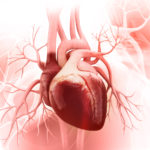Understanding Eosinophilic Esophagitis
Understanding Eosinophilic Esophagitis https://pediatricsnationwide.org/wp-content/themes/corpus/images/empty/thumbnail.jpg 150 150 Emily Siebenmorgen Emily Siebenmorgen https://pediatricsnationwide.org/wp-content/uploads/2023/05/Emily.Siebenmorgen-scaled-e1684876333147.jpg- October 17, 2022
- Emily Siebenmorgen
Recent PediaCast CME episode from Mike Patrick, MD, shares important information about diagnosing and treating eosinophilic esophagitis.
Eosinophilic esophagitis, or EOE, may not be the first condition providers think of when a patient presents with upper abdominal pain or dysphagia. EOE incidence has increased 30 times since its discovery in the 1990s, but overlapping symptoms with common conditions such as gastroesophageal reflux disease (GERD) mean patients may experience a delay in diagnosis or unnecessary pain and complications.
EOE is a chronic, immune-mediated clinical pathologic disorder of the digestive system where large numbers of white blood cells, called eosinophils, are present in the esophagus. The disorder is characterized by vomiting, stomach or chest pain, failure to thrive, difficulty swallowing and food getting stuck in the throat. While associated with other atopic conditions including asthma, eczema, allergic rhinitis, it is a different type of food-induced inflammation compared to anaphylactic reactions.
In a recent episode of PediaCast CME, podcast guests Rajitha Venkatesh, MD, pediatric gastroenterologist at Nationwide Children’s and Elizabeth Erwin, MD, pediatric allergist at Nationwide Children’s, spoke with Dr. Mike Patrick to discuss what EOE is, what providers should know and how EOE may be managed in the future.
Who is at risk for EOE, and what are the symptoms?
The mean age of EOE diagnosis is nine years old in the pediatric population, but children of any age presenting with the symptoms should be considered. Epidemiologic studies suggest diagnosis age is bimodal: diagnoses peak in children as young as one year old, but a lot of teenagers presenting with classic symptoms are diagnosed as well. Diagnosis is more common in white patients and in males. Family history is a strong indicator.
Symptoms of EOE vary between individuals and may be reported differently depending on the patient’s communication capabilities. Common symptoms that span from infancy to adulthood include reflux that doesn’t respond to acid medications, nausea and vomiting.
Infants and younger children may refuse their food or have trouble growing properly. Failure to thrive from malnutrition, weight loss, feeding refusal or chest or belly pain are common symptoms in this age group. Behavioral symptoms like eating slowly, chewing excessively and drinking larger amounts of fluid with their meal are coping mechanisms that can also indicate problems with feeding.
Adolescents may have more difficult or painful swallowing, nausea, vomiting or suffer from food impactions. Without treatment, the esophagus can become stiff or narrowed over time.
How can providers differentiate EOE from GERD, constipation, chronic abdominal pain, etc.?
This diagnosis probably can’t be made in the primary care office. Patients that see symptoms return after coming off medications for acid reduction should consider a referral to a GI specialist. Ultimately this is a clinical pathologic diagnosis, meaning that endoscopy is always needed to distinguish EOE from other conditions. Symptoms are part of the equation, but identifying mucosal inflammation – specifically, eosinophil inflammation at one or two levels of the esophagus – is needed to rule out some other potential diagnoses.
What are the treatment options for EOE?
Because this is such a new disease, the main treatments are diet management, medication and decreasing dysphagia.
- Diet: Removing known or suspected food triggers (milk, wheat, eggs, soy, peanuts, tree nuts, fish, etc.). Elemental nutrition (special amino acid-based formulas that don’t elicit an allergic response) through a temporary feeding tube provide a substitute for food in the diet.
- Medications: Most recently, Dupixant (dupilumab) became the first FDA-approved drug for children 12 and older with EOE, blocking chemical signals from pulling eosinophils into the esophagus. More common medications are topical steroids to control inflammation and suppress eosinophils (fluticasone or budesonide). Acid suppressors, including proton pump inhibitors, not only help relieve reflux symptoms but also reduce eosinophils. Systemic corticosteroids are rarely used, especially not for chronic management.
- “Stretching the esophagus”: If a patient’s esophagus becomes too narrow from EOE, a gastroenterologist can use a balloon or insert a tube into the esophagus to stretch it out and ease symptoms. Feeding therapists are also heavily involved in coaching patients through eating and pill swallowing.
Patients diagnosed with EOE will likely need to continue treatment throughout their life. Some patients may find it difficult to get symptoms under control, but most can find a solution and do well with proper treatment. Primary care doctors play an important role in understanding why medications are being used and reinforcing their importance for patients to continue their usage.
About the author
Emily Siebenmorgen is a Science Communication Specialist at Nationwide Children's Hospital with a passion for making research findings accessible. From her time writing at Battelle and AWRI's Center for Injury Research and Policy, she has experience distilling complex topics into simple takeaways for both professional and consumer audiences. Emily earned her BS in Psychology and BA in Strategic Communication from The Ohio State University.
-
Emily Siebenmorgenhttps://pediatricsnationwide.org/author/emily-siebenmorgen/
-
Emily Siebenmorgenhttps://pediatricsnationwide.org/author/emily-siebenmorgen/
-
Emily Siebenmorgenhttps://pediatricsnationwide.org/author/emily-siebenmorgen/September 29, 2022
-
Emily Siebenmorgenhttps://pediatricsnationwide.org/author/emily-siebenmorgen/November 1, 2022
- Posted In:
- In Brief
- Uncategorized









